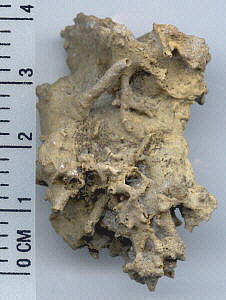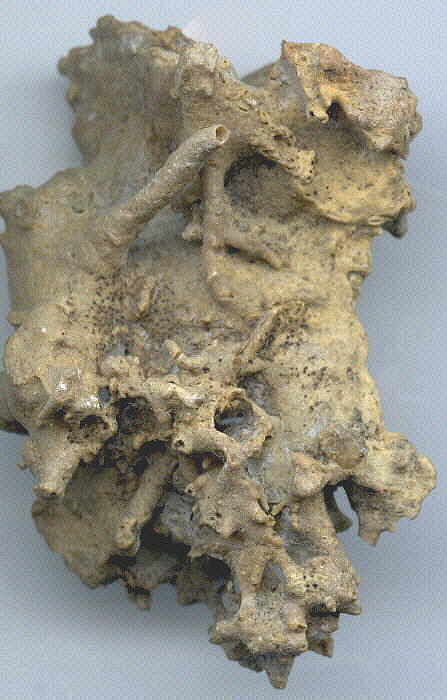Root molds
Quaternary specimen found in the Pennsylvanian


Root mold
General abundance: Rare
Thanks to Dr. Norm King for
the Identification.
Dr. King examined the specimen during a recent visit
to the site.
This is part of a limestone crust that lined a nearly
vertical
karstic fissure in the Worland Limestone (i.e., a fissure produced
by acidic rain water infiltrating the soluble limestone and dissolving
it). The crust formed where ground water saturated with calcium
carbonate evaporated or was taken up by plants. When such mineral-
bearing water evaporates or is absorbed by plant roots, the mineral
matter is left behind as a precipitate. The material of this specimen
is very porous, and the roots have left mineralized molds, called
rhizocretions. It has formed within the last few thousand years, since
the fissures are associated with Quaternary (Pleistocene or Holocene)
weathering. It is therefore not a product of Pennsylvanian time, even
though these crusts are now firmly attached to the sides of a
Pennsylvanian limestone.
Dr. Norm King
Dr. Andrew Rindsberg provided some very interesting
information about roots and burrows.
Fossil Roots and Burrows
Go-Back
Trace
Fossils
Fossil
Menu